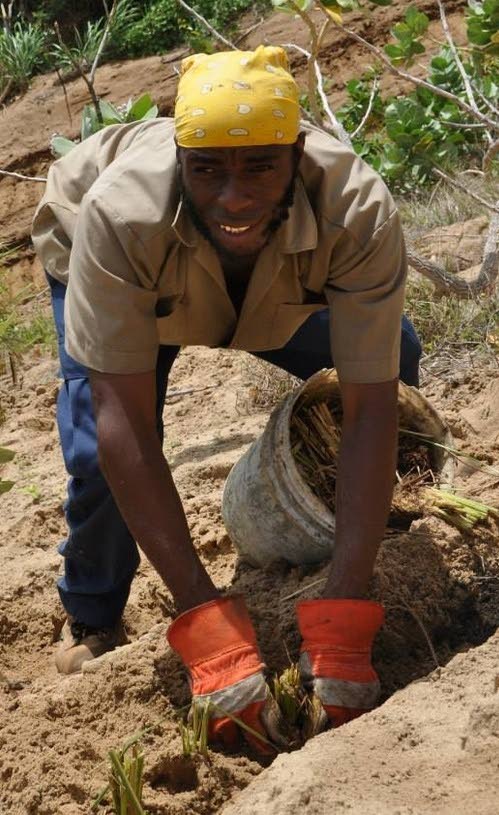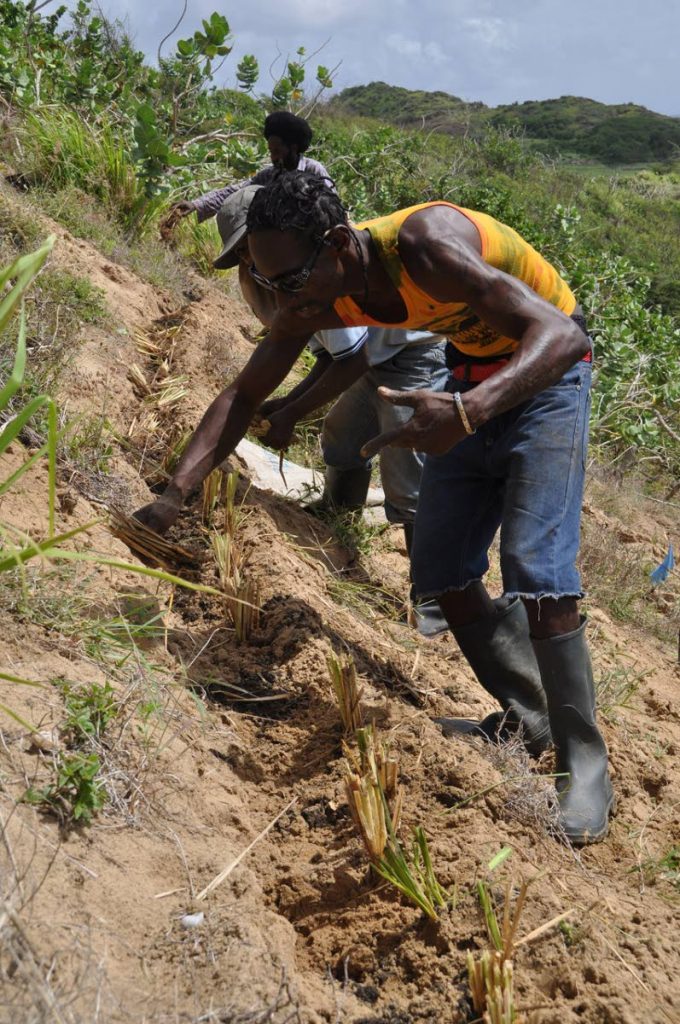The green and blue vision for Tobago

Dr Anjani Ganase has referred to the green economy and the blue economy as appropriate for small islands. Here, she explains the concepts.
The green economy is an economy that is aligned with the health of the environment. It is based on the deep understanding that human beings are fundamentally reliant on the environment for lives and livelihoods. The air we breathe, the food we eat, the water we drink, our healthcare, are dependent on our natural ecosystems. Unfortunately, at the moment we do not budget environmental degradation – carbon emissions, land clearing, chemical discharge – into human activities. To our detriment, we bear the brunt of the impact; annually over three million people worldwide die from air pollution (WHO); and we are using way too much resources without replenishment. To shift to a green economy, we need to first reduce excessive or inefficient consumption of natural resources by instilling more sustainable practices and infrastructure through a better understanding of our planet’s ecosystems. For many who live on islands and coasts, this concept extends to the blue economy, which is the sustainable use of oceans and marine resources.

The transition to green and blue may seem overwhelming because we believe it requires a complete 180 degree change in our jobs and lifestyles. This is not the case. Rather, it requires national and global support for implementing policies for best practices in curbing environmental and health impact in the sectors of food and agriculture, energy, manufacturing, technology and transport, all sectors which extract from the natural world. In 2012, the International Labour Organization (ILO) reviewed the opportunities presented by the green economy. Let’s focus on agriculture and forestry as the largest employer globally, yet it draws the lowest revenue. Let us also consider that the practices of modern agriculture make it a major emitter of greenhouse gases; it is also now extremely vulnerable to climate changes and the pressure of increased production as the population continues to increase.
Green agriculture and agroforestry
To feed the world’s billions, we need to work smarter. The agricultural industry is not green. It needs considerable revamp of regulations and the implementation of supporting green infrastructure to allow the farmer to work lands that are naturally enriched and supplied by stable water sources. Going green in agriculture means a shift from large-scale monocultures that utilise unsustainable clearing practices, including slash and burn, and improper soil management with a high dependency on fertilisers and pesticides. How do we make the shift?

The ILO has identified techniques for developing green agriculture. Firstly, techniques in soil fertility/ plant nutrient management refer to the use of organic – compostable plant and animal waste – fertilisation and crop diversification where crops that input nutrients into the soil are grown with other crops instead of synthetic fertilisers. Let us start with understanding the micro-ecology of soils and develop the scientists to provide knowledge of soil composition and ecology. We need to appreciate the microbes and organisms that maintain soil structure to improve productivity of certain plants. Building on soil, we turn to efficient and sustainable water management through irrigation technology, improving rainfall collection but also determining crop suitability during times of drought or flood conditions, either through selective breeding of plants or landscaping.
Other avenues of opportunity include crop and livestock diversification, biological plant and animal health management and appropriate mechanisation. There are methods of permaculture or regenerative agriculture where an array of crops that complement each other’s environments are used, similar to what is seen in nature. For example, the inclusion of banana plants and rubber trees on cocoa estates to enrich the soil and shade the cocoa trees. Livestock integration encourages the farming of crops and livestock in synchrony; examples of methods include silvo-pastoral systems where animal grazing is carried out among trees – fruit, nuts, and timber crops. Significantly, green agriculture encourages more efficient farming on smaller scales that have lower impact.

Let us also consider agro-forestry. While the primary goal of forestry is the protection and management of our natural stocks, forestry can go beyond traditional conservation tactics, and include active rehabilitation and reforestation of retired agricultural lands, quarries and mines. These programmes can be funded through taxes on resource extraction and enforced by environmental law. Agroforestry can then be developed on rehabilitated lands for timber or orchards. Government must ensure proper management and certification processes. Other offshoot opportunities of a well-functioning forestry division include eco-tourism. Creating a national park for low-impact tourism – hiking and camping permits – can also contribute to forest health maintenance.
Management of fisheries
An important sector of island ecosystems is fisheries. It is the resource that is most difficult to align with blue or green economic standards, considering that we have over-exploited most of our oceans for hundreds of years and we have limited control of fish stocks beyond our borders. Fisheries need to move beyond a purely extractive enterprise to stock management and farming. Fish stocks are primarily managed through the implementation of marine protected areas. If we implement similar harvest practices based on the knowledge of the life cycle of fish species, we can significantly improve the fishing industry. Fish farming – in the simplest form, this means taking care of the nurseries for juvenile fish – can subsidise the pressure on wild fish stocks.

-
The development of green agriculture and blue fisheries is dependent on a supportive government policy framework to promote sustainable development and reduce ecologically harmful practices. The government will need to implement on land and sea, spatial planning and zonation, tax incentives, permitting and certifications, and recruit a skilled labour force. Skills range from research and development, ocean and environmental engineering, management and labour. The green and blue ventures are most suitable for our island ecosystem where there is limited space for agriculture that does not encroach on the many unique habitats we house.
Ready to change?
Apart from effects on our own health and well-being, the covid19 pandemic is signalling an end to business as we knew it. Shareholders in existing businesses should be anxious to formulate new strategic business plans for at least the next 18 months. How could existing investments – buildings and people – be speedily converted to catch the rising wave of new island economy. Yes, there will have to be renovations, conversions of existing buildings, retraining of loyal staff, recruitment of young enthusiasm. There will be expenditure and lower revenues for a while. There will be need for belt-tightening. But a vision for a future that is based on health and well-being for our island communities must be worth some effort.
References:
World Health Organization. (2016). Ambient air pollution: A global assessment of exposure and burden of disease.
International Labour Office. (2012). Working towards sustainable development: Opportunities for decent work and social inclusion in a green economy. International Labour Organization.

Comments
"The green and blue vision for Tobago"